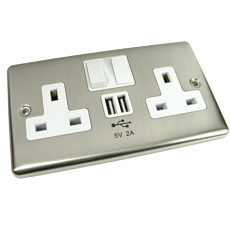Welcome to TV Connections, here we look at the various ways of connecting a televisions, displays, media devices and home cinema systems etc. For the past 30 years the scart lead has been the primary connection cable for connecting a device to a TV but in the last 3 years everything has changed as we have moved into the digital age.
The scart lead is still in widespread use today but is only capable of carrying an analogue TV signal with a standard definition resolution, most commonly in the UK referred to as 576i (576 lines of interlaced picture).
A new connection called an HDMI cable was created to carry a high definition TV (HDTV) signal into the new LCD and Plasma TV ranges. HDMI Cables have much smaller plugs than scart and if you’re not familiar with them you could mistake it for a USB connector. The HDMI Cable carries the signal digitally as a stream of 1s and 0s, as such it is much less prone to interference and all but a faulty cable will transfer the sound and picture in perfect quality. Continue reading “TV Connections”
